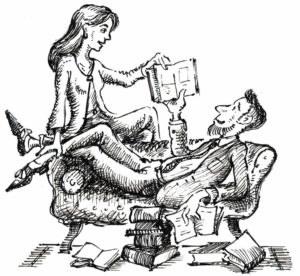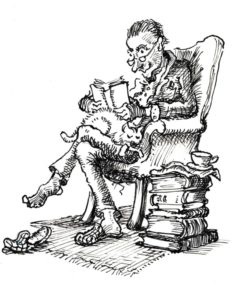In Search of Dinu Lipatti
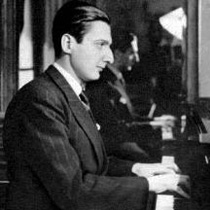 The Romanian pianist DINU LIPATTI died in 1950 at the tragically early age of 33. He succumbed to complication arising from Hodgkins’ lymphoma. Yet for all its brevity and intensity, his life was far from unfulfilled: in an emotionally tense and painfully short period of time he charged the musical world with brilliance. He came to international prominence in 1943, and his musical achievements in the following seven years were abridged first by the Second World War, when he settled in Geneva, and then by illness, whose debilitating conclusion was staved temporarily by cortisone injections funded by musical fans from Menuhin to Stravinsky. His performances were few, his studio recordings amount to less than four hours worth, there is no filmed footage of him (although three radio interviews survive), and there is only a small but slowly expanding collection of recorded live performance; those who knew him are now mostly dead. Such a biography is the stuff of legend, and his musical afterglow is revered as the Holy Grail. His reputation has been fed by a relentless lust to recover and piece together the jigsaw of his extant live recordings, often known theoretically to exist yet still to be found, and the legendary mishap of recording companies issuing performances hailed as his (but not) has only fired the bonfire of curiosity. But his career remained in miniature only, there is no replete body of work, and the classical music world is too cerebral to succumb to the iconicity of a James Dean. Lipatti is now the preserve of the hardcore or the indulgently idiosyncratic or the nostalgically historic, but as such he remains the pianists’ pianist, and his scant recordings a litmus test of true worth.
The Romanian pianist DINU LIPATTI died in 1950 at the tragically early age of 33. He succumbed to complication arising from Hodgkins’ lymphoma. Yet for all its brevity and intensity, his life was far from unfulfilled: in an emotionally tense and painfully short period of time he charged the musical world with brilliance. He came to international prominence in 1943, and his musical achievements in the following seven years were abridged first by the Second World War, when he settled in Geneva, and then by illness, whose debilitating conclusion was staved temporarily by cortisone injections funded by musical fans from Menuhin to Stravinsky. His performances were few, his studio recordings amount to less than four hours worth, there is no filmed footage of him (although three radio interviews survive), and there is only a small but slowly expanding collection of recorded live performance; those who knew him are now mostly dead. Such a biography is the stuff of legend, and his musical afterglow is revered as the Holy Grail. His reputation has been fed by a relentless lust to recover and piece together the jigsaw of his extant live recordings, often known theoretically to exist yet still to be found, and the legendary mishap of recording companies issuing performances hailed as his (but not) has only fired the bonfire of curiosity. But his career remained in miniature only, there is no replete body of work, and the classical music world is too cerebral to succumb to the iconicity of a James Dean. Lipatti is now the preserve of the hardcore or the indulgently idiosyncratic or the nostalgically historic, but as such he remains the pianists’ pianist, and his scant recordings a litmus test of true worth.
His musical career was all but predestined: his father was a skilled violinist taught by Sarasate and his mother was a keen pianist who sat her young child on her knee so that he could learn to play. Dinu’s baptism was delayed until he had mastered a Mozart minuet and George Enescu had agreed to be his godfather; his early years are studded with accolade and prizes, and he was to catch the ear of Alfred Cortot, who it was rumoured had resigned as one of the judges at the 1933 Vienna International Piano Competition when Lipatti was granted only second prize. He studied in Paris with both Cortot and Nadia Boulanger (with whom he recorded Brahms’ Waltzes Op.39 for four hands), where he studied also conducting with Charles Munch and composition with Paul Dukas. His repertoire was much larger than his discography suggests, and the horizon of his musical worldview was nineteenth century and broad minded in its ambition, his own compositional endeavour paramount to his musical personality. This can only have contributed to Lipatti’s precocious maturity as an interpreter.
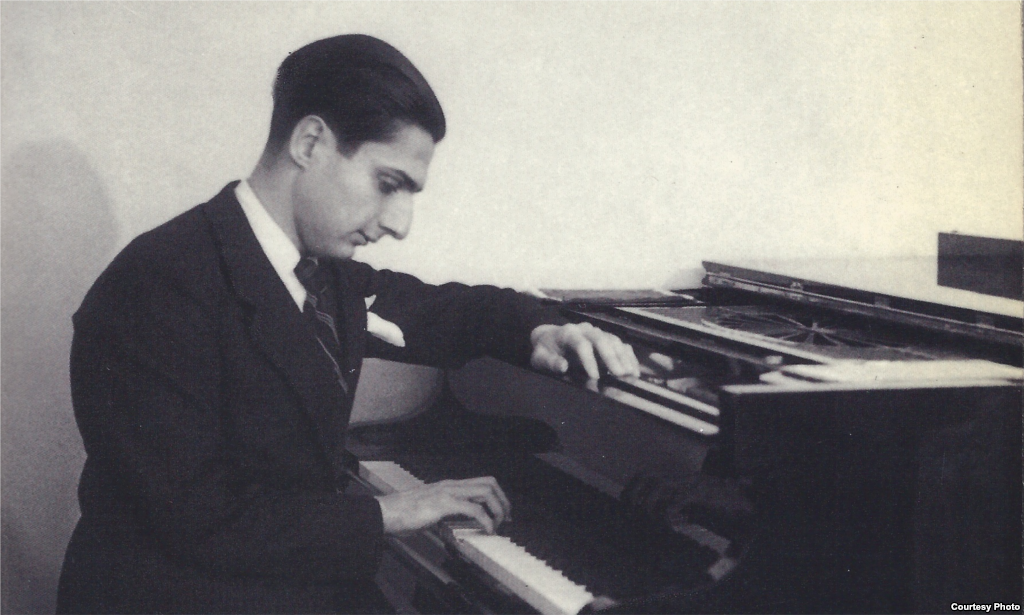 It can be argued that Lipatti was a pivotal figure in the history of twentieth century piano performance. He straddled two dichotomous worlds, two contrasting eras of performance and personality. And if not quite at the meeting point of these two worlds (he was in some ways a figure ahead of his time), he was a baton carrier, and he exhibited perhaps the finest traits of both.
It can be argued that Lipatti was a pivotal figure in the history of twentieth century piano performance. He straddled two dichotomous worlds, two contrasting eras of performance and personality. And if not quite at the meeting point of these two worlds (he was in some ways a figure ahead of his time), he was a baton carrier, and he exhibited perhaps the finest traits of both.
Before Lipatti’s death, it was the virtuoso pianist who held sway. The term virtuoso could mean many things. Artur Rubinstein and Vladimir Horowitz, arch box office and vox pop rivals throughout their lengthy careers, headlined diffuse notions of virtuosity: Rubinstein‘s supreme touch, boundless brio, vitality, and blatant use of emotional blackmail was chalk to Horowitz‘s cheese, with his showboated excitement, musical hooliganism (he disturbed any notated score to an alarming fashion), and a pyrotechnical palette of tone. And their contemporaries – witness Schnabel‘s seesaw from pub pianist to footnoted intellectual, or Cortot’s romantic fabulism – offered each a contrasting vista of virtuosity. But virtuosity was not about technical brilliance, for if Horowitz could play several scales at once, upside down and with one hand tied behind his back, Rubinstein was able to play an octave scale with, at times, rarely less than seven wrong notes. Virtuosity consisted of a preponderance of personality, where a pianist invested themself wholeheartedly and overwhelmingly in a performance. Any performance might list to one side, weighted not just by often an excessive deviation from the notated score, but also by the tics and traits of the age and of each pianist (these tics sound sometimes ghastly to the modern ear). But above all else, personality, individuality, and a much more creative sense of interpretation dominated. Schnabel announced that Lipatti had “an entirely new way of playing the piano,” and would hear him play whenever he could.
Today there is more emphasis on a studious and hierarchical interpretation, of composers’ intent and the written score. This leads to a slightly bland musical world where, at worst, errant individuality and bravery have gone, and, at best, the notated score is served by a true and a footnoted (if at times overly fusty) respect, with period piece delicacies and detail, the requisite amount of pedaling for the period, so on, in fact much of the piano’s technical restriction of the composer’s time. So today it is likely that most pianists’ interpretation of Mozart is equally delightful; scurrilously one could observe that such a world is far more anodyne than need be, for pianists rarely seem able to vent idiosyncratic steam, to give truly personal impulse free rein. Indeed any pianist that is known to be a little temperamental or wayward, who displays an exhibitionist tendency or is overly anxious to pander to personal peccadillo – such as Igo Pogorelich, a recent visitor to Oxford – sticks out like a sore thumb and becomes a musical cause célèbre. This modern world has kicked in gradually, and kicks in well after Lipatti dies – which is why I attest that he was ahead of his time. I am not sure when this baton change takes place, but you can chart its rise by a digression: LP – now CD, of course – covers. Decades ago the performer’s name was writ large, the composer’s name in small and tidy print; these days, good taste will prevail and there is a far more democratic typography, the composer sacrosanct.
Dinu Lipatti straddles these two eras with ease and grace. He was able to impose himself upon a score, yet step back before we lose sense of where composer’s intention ends and performer’s personality begins: with Lipatti the two sit side by side. His interpretation of Bach, Mozart, Schumann, Liszt, Ravel, whoever, is bold and forthright, could only be Lipatti’s, yet never loses sense of its inherent meaning and purpose. To understand a score, Lipatti thought that “intuition” was far more vital than historical research, for music confesses “the secret of its soul.”
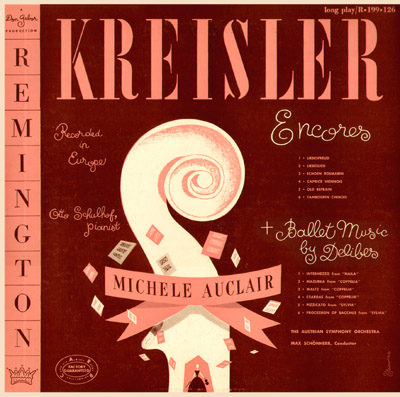 One of my defining odysseys as a child was the casual inheritance of a vast record collection from my grandfather. He was a staff member of the BBC Record Library, a vast vault of addiction and cornucopia, comprising shellac, vinyl, the rustle of flimsy and creased brown paper sleeves, and a gazetteer of invocation, in fact a vocabulary that means little to the digital ear – woofer, electromagnet pickups, 78rpm (in this case all with chalk marks where the record attendant had marked the entry for airplay), LPs (or long play), some of whom came wrapped in those wonderful early non-laminated sleeves, masterpieces of popular design that predated the plague of mass-produced photography. As a short trousered musician, I ransacked the rich assortment of pianists within this collection, and their names – Rosalyn Tureck (whose heavenly playing of Bach could of itself lead to a belief in God), Annie Fischer (whose later portraits resembling an old boot did nothing to assuage my adolescent desire to marry her), Benno Moiseiwitsch (his incurable gambling habit writ large in his playing), Wilhelm Backhaus (oh! his incontinent left hand!), Walter Gieseking (throwaway Mozart that mixed decadence with refinement), Solomon (imaginative and will-o’-the-wispish), endless names, even the hapless, Chaplinesque Paderewski (“Yes, he plays well, I suppose,” quipped one wit, “but he’s no Paderewski”) – became as familiar to me as the street names of my housing estate, but they proffered an imaginative landscape that exceeded any urban geography, and became stepping stones to a rich and promiscuous musical world. But the name that shone effortlessly above all other, the name that stole my heart like no other, was Dinu Lipatti. That he had a brief, joyful yet tragic life was yet to be discovered by me. But it was one recording in particular that danced before my ears and excited me beyond belief, and in this case beyond my capacity for disbelief.
One of my defining odysseys as a child was the casual inheritance of a vast record collection from my grandfather. He was a staff member of the BBC Record Library, a vast vault of addiction and cornucopia, comprising shellac, vinyl, the rustle of flimsy and creased brown paper sleeves, and a gazetteer of invocation, in fact a vocabulary that means little to the digital ear – woofer, electromagnet pickups, 78rpm (in this case all with chalk marks where the record attendant had marked the entry for airplay), LPs (or long play), some of whom came wrapped in those wonderful early non-laminated sleeves, masterpieces of popular design that predated the plague of mass-produced photography. As a short trousered musician, I ransacked the rich assortment of pianists within this collection, and their names – Rosalyn Tureck (whose heavenly playing of Bach could of itself lead to a belief in God), Annie Fischer (whose later portraits resembling an old boot did nothing to assuage my adolescent desire to marry her), Benno Moiseiwitsch (his incurable gambling habit writ large in his playing), Wilhelm Backhaus (oh! his incontinent left hand!), Walter Gieseking (throwaway Mozart that mixed decadence with refinement), Solomon (imaginative and will-o’-the-wispish), endless names, even the hapless, Chaplinesque Paderewski (“Yes, he plays well, I suppose,” quipped one wit, “but he’s no Paderewski”) – became as familiar to me as the street names of my housing estate, but they proffered an imaginative landscape that exceeded any urban geography, and became stepping stones to a rich and promiscuous musical world. But the name that shone effortlessly above all other, the name that stole my heart like no other, was Dinu Lipatti. That he had a brief, joyful yet tragic life was yet to be discovered by me. But it was one recording in particular that danced before my ears and excited me beyond belief, and in this case beyond my capacity for disbelief.
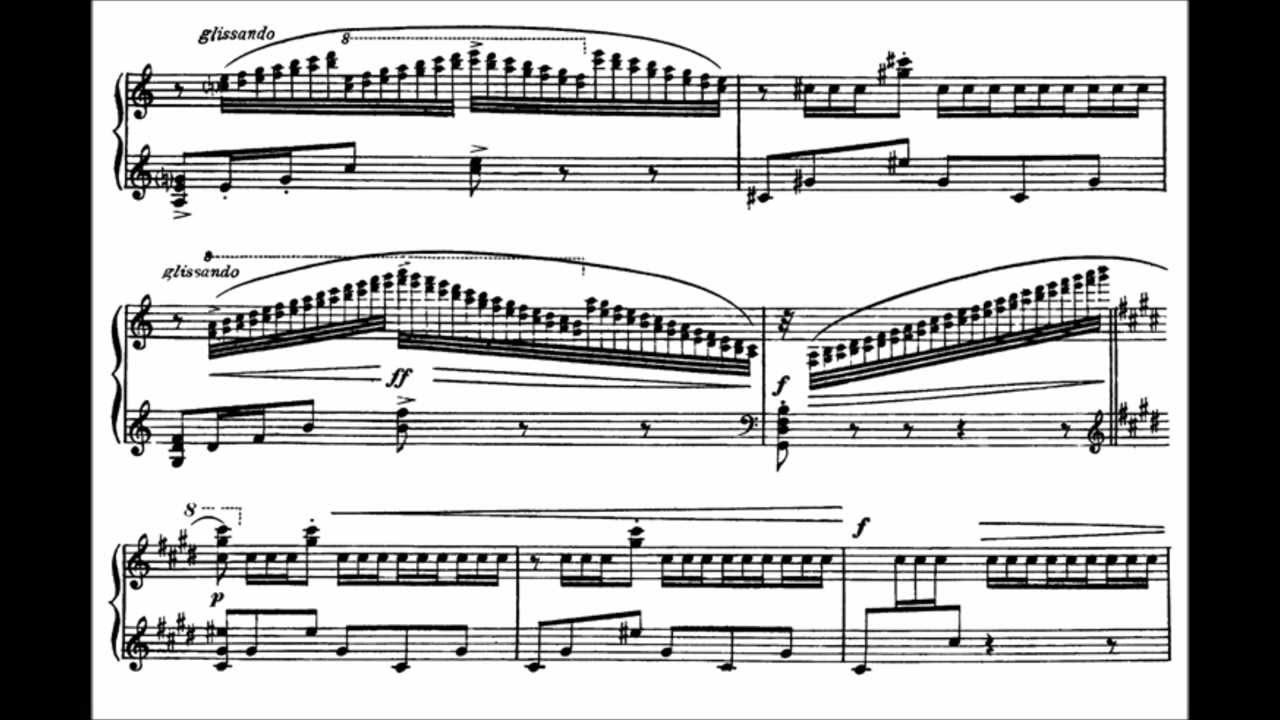 Ravel’s Alborada del Gracioso was written in 1905. It was part of a suite of five pieces for piano entitled Miroirs, each piece dedicated to a member of the French avant-garde group Les Apaches, a group that focused on music and was named after the street gangs rampant in turn of the century Paris: composers like Manuel de Falla and Stravinsky, the pianist Ricardo Viñes (who gave the suite its first performance in 1906), and a smattering of critics, painters and cultural luminaries. The piece is alarmingly difficult to play technically, as is all Ravel’s piano work, which is deceptively simple often in its hearing yet riddled with technical impasse for the amateur pianist. Even more disarming is its bewilderingly complex structural architecture: its Spanish (even flamenco like) musical trope is kaleidoscopic and episodic, in fact Ravel later orchestrated it. Many concert pianists stumble as they bolt its musical melange together, suggesting often only a patchwork patois rather than its authorized version. Lipatti’s performance possesses omniscient control, and displays faultless mapping of the musical terrain. And like an intuitive performance of Beethoven or Mozart (indeed Ravel so effortlessly grasped the sense of order and perspective that composers of the early nineteenth-century classical period inhabited, his popular Boléro the apogee of shaped form), Lipatti’s paper chase trail of geographic clues is unsurpassed, and we know where we are at all times in his performance of this piece: it is a musical Ordnance Survey map in relief. The excitement he generates as the work unwinds and then climaxes is carefully crafted and wanton, even if it offers an impression of wild abandonment and haphazard control. Lipatti’s fabled technique, crystal fingering and lucid diction – his sparse use of the sustain pedal, supported by his immense span of an octave and five, is outstanding in such a work which is littered with large chords and distended intervals – makes nonsense of the piece’s technical requirements. Lipatti is hardly alone with such virtuosity, but his crucial control of the rapid fire ostinati figure, one of Ravel’s trademarks, is astonishing, particularly as it is subjected to a marked crescendo and diminuendo. And Lipatti’s glissandi (in thirds) beggars belief, and when the glissandi run in to scales, amazingly no join can be detected, and such nonchalant aplomb leaves the listener gobsmacked.
Ravel’s Alborada del Gracioso was written in 1905. It was part of a suite of five pieces for piano entitled Miroirs, each piece dedicated to a member of the French avant-garde group Les Apaches, a group that focused on music and was named after the street gangs rampant in turn of the century Paris: composers like Manuel de Falla and Stravinsky, the pianist Ricardo Viñes (who gave the suite its first performance in 1906), and a smattering of critics, painters and cultural luminaries. The piece is alarmingly difficult to play technically, as is all Ravel’s piano work, which is deceptively simple often in its hearing yet riddled with technical impasse for the amateur pianist. Even more disarming is its bewilderingly complex structural architecture: its Spanish (even flamenco like) musical trope is kaleidoscopic and episodic, in fact Ravel later orchestrated it. Many concert pianists stumble as they bolt its musical melange together, suggesting often only a patchwork patois rather than its authorized version. Lipatti’s performance possesses omniscient control, and displays faultless mapping of the musical terrain. And like an intuitive performance of Beethoven or Mozart (indeed Ravel so effortlessly grasped the sense of order and perspective that composers of the early nineteenth-century classical period inhabited, his popular Boléro the apogee of shaped form), Lipatti’s paper chase trail of geographic clues is unsurpassed, and we know where we are at all times in his performance of this piece: it is a musical Ordnance Survey map in relief. The excitement he generates as the work unwinds and then climaxes is carefully crafted and wanton, even if it offers an impression of wild abandonment and haphazard control. Lipatti’s fabled technique, crystal fingering and lucid diction – his sparse use of the sustain pedal, supported by his immense span of an octave and five, is outstanding in such a work which is littered with large chords and distended intervals – makes nonsense of the piece’s technical requirements. Lipatti is hardly alone with such virtuosity, but his crucial control of the rapid fire ostinati figure, one of Ravel’s trademarks, is astonishing, particularly as it is subjected to a marked crescendo and diminuendo. And Lipatti’s glissandi (in thirds) beggars belief, and when the glissandi run in to scales, amazingly no join can be detected, and such nonchalant aplomb leaves the listener gobsmacked.
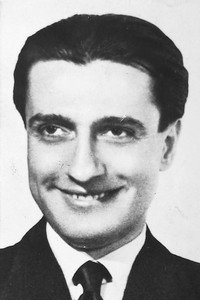 When I met first some Romanian folk, I declared that I knew nothing of Romania but knew that its purpose and presence were made necessary by Dinu Lipatti (I was reminded of my arrogance by one of my friends recently when we celebrated socially in early December last year the sixty-fifth anniversary of Lipatti’s death). It is odd that Lipatti even now is not so well known in his own country as perhaps he ought to be: his move to Switzerland made him a doubtful figure to the later Communist state, where his brother, Valentin, remarkably, was a prominent member of the Romanian secret police. But I maintain that Lipatti was a true gift of God as well as a remarkable musician. There is a sense of divine favour, certainly a framework of order to his life, a sense of order that destined his public career to be bookended by Bach’s chorale Jesu, Joy of Man’s Desiring: his first public recital when a child opened with this piece, and, at his last recital at the Besançon International Music Festival in September 1950, when too unwell to conclude with the programmed Chopin waltzes (he had started to play the waltz in Db major but did not have the strength to continue), he replaced it with the hushed serenity of Myra Hess’ magical arrangement of the Bach chorale. That we are left today with fragments of Dinu Lipatti, mere snapshots in time, a truncated musical sketch with only dots to be joined together by our imagination, does not matter. Just to hear momentarily the clarity and poise of his playing is enough.
When I met first some Romanian folk, I declared that I knew nothing of Romania but knew that its purpose and presence were made necessary by Dinu Lipatti (I was reminded of my arrogance by one of my friends recently when we celebrated socially in early December last year the sixty-fifth anniversary of Lipatti’s death). It is odd that Lipatti even now is not so well known in his own country as perhaps he ought to be: his move to Switzerland made him a doubtful figure to the later Communist state, where his brother, Valentin, remarkably, was a prominent member of the Romanian secret police. But I maintain that Lipatti was a true gift of God as well as a remarkable musician. There is a sense of divine favour, certainly a framework of order to his life, a sense of order that destined his public career to be bookended by Bach’s chorale Jesu, Joy of Man’s Desiring: his first public recital when a child opened with this piece, and, at his last recital at the Besançon International Music Festival in September 1950, when too unwell to conclude with the programmed Chopin waltzes (he had started to play the waltz in Db major but did not have the strength to continue), he replaced it with the hushed serenity of Myra Hess’ magical arrangement of the Bach chorale. That we are left today with fragments of Dinu Lipatti, mere snapshots in time, a truncated musical sketch with only dots to be joined together by our imagination, does not matter. Just to hear momentarily the clarity and poise of his playing is enough.
Dinu Lipatti’s performance of Ravel’s Alborada del Gracioso
Justin Libeer discusses and performs Lipatti’s Sonatina for the Left Hand
 AN AFTERWORD, 2017: I’ve been to Romania many times before, but this summer was my first visit to Dinu Lipatti’s childhood house: a pilgrimage. Lipatti moved early in his career to Paris, returned to Romania but exiled himself from Communism in 1946, when he settled in Switzerland for the rest of his life. His exile made him perhaps a doubtful figure to the state. There is no plaque, the desecration of a huge advertising hoarding in the front garden, and it is under threat of demolition (to which, thankfully, there has been some local resistance, and from abroad). It was interesting to learn on my visit that when Dinu Lipatti was near his death, his mother had great difficulty
AN AFTERWORD, 2017: I’ve been to Romania many times before, but this summer was my first visit to Dinu Lipatti’s childhood house: a pilgrimage. Lipatti moved early in his career to Paris, returned to Romania but exiled himself from Communism in 1946, when he settled in Switzerland for the rest of his life. His exile made him perhaps a doubtful figure to the state. There is no plaque, the desecration of a huge advertising hoarding in the front garden, and it is under threat of demolition (to which, thankfully, there has been some local resistance, and from abroad). It was interesting to learn on my visit that when Dinu Lipatti was near his death, his mother had great difficulty 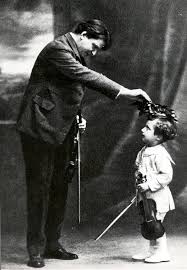 escaping Romania to visit her dying son; the border guards even confiscated her jewellery, which she had taken to support herself abroad, as Lipatti was unable to support her financially. (I was not surprised to learn also that when Enescu – Lipatti’s godfather and early musical mentor – died in Paris, Romanian diplomats made attempts to have his body flown back to Romania, though his wife battled and bettered them, and Enescu was buried in Paris.)
escaping Romania to visit her dying son; the border guards even confiscated her jewellery, which she had taken to support herself abroad, as Lipatti was unable to support her financially. (I was not surprised to learn also that when Enescu – Lipatti’s godfather and early musical mentor – died in Paris, Romanian diplomats made attempts to have his body flown back to Romania, though his wife battled and bettered them, and Enescu was buried in Paris.)



